The names behind the buildings III: James Lighthill Building and Morton Laboratory
Heritage 9th May 2019
This month we continue our look at the buildings of North Campus and the influential people after which they’re named. We’ve already delved into the stories behind the Renold and Barnes Wallis Buildings and the Ferranti Building; now we shine a light on the James Lighthill Building and Morton Laboratory.
The buildings line the boundary of North Campus, formerly the site of UMIST. James Lighthill and Frank Morton, however, were anything but peripheral.
James Lighthill Building
Diagonally across from Retro Bar – a drinking den with its own storied history, including various incarnations as The Hive and The Swinging Sporran, and hosting early sets from famous Manchester alumni the Chemical Brothers (then known as the Dust Brothers) – stands the James Lighthill Building.
Formerly the Paper Science Building, the site is now home to the University’s Aerospace Research Institute – fitting when you consider Sir Michael James Lighthill’s significant contribution to British air travel.
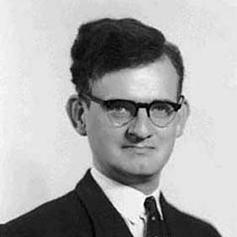
Born in Paris in 1924, Lighthill was an applied mathematician who would become known for his pioneering work in the field of aeroacoustics. He was appointed as a Senior Lecturer at The University of Manchester in 1946, and set up a fluid dynamics group. He would later, in 1950, be promoted to Beyer Professor of Applied Mathematics here – an endowed professorial position named after celebrated locomotive designer Charles Frederick Beyer. He served in the role until 1959. But it wouldn’t be with trains that Lighthill would make his name. This would be planes and, more specifically, Concorde.
Upon leaving the University, Lighthill would become director of the Royal Aircraft Establishment at Farnborough in Hampshire. His work on the development of manned spacecraft and supersonic flows would later be used in the development of the famous, and much-loved, Concorde supersonic airliner – a French-British turbojet plane that boasted a maximum speed of more than twice the speed of sound and celebrates the 50th anniversary of its first flight this year.
Lighthill’s achievements were not restricted to the Concorde, however. Far from it. Other work included that in the fields of hydrodynamics, aerodynamics, biomechanics and wave mechanics. He is credited as the founder of aeroacoustics – which plays a crucial role in keeping the noise of jet engines down to a safe level.
The list also includes the founding of the Institute of Mathematics and its Applications in 1964, and in the same year he became the Royal Society’s resident professor at Imperial College London. In 1969 he was named Lucasian Professor of Mathematics at Trinity College, Cambridge. His successor, ten years later? One Stephen Hawking.
Other accolades are too many mention (you get the picture), but his much-deserved knighthood arrived in 1971.
Unfortunately, it would be in tragedy that James Lighthill’s life would come to an end. A keen open-water swimmer, he had swam around the island of Sark in the Channel Islands, off the coast of Normandy, France, many times. But on one occasion in 1998, the mitral valve in his heart ruptured, and Lighthill died in the water.
His legacy, however, lives on – including here at Manchester.
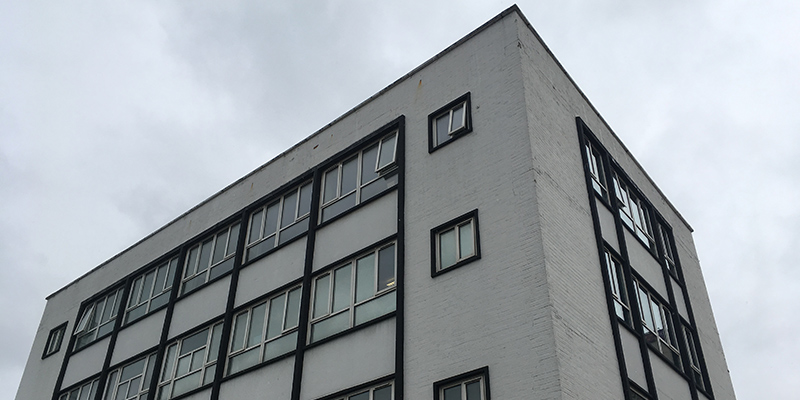
Morton Laboratory
At the opposite end of North Campus sits the Morton Laboratory. Formerly the Chemical Engineering Pilot Plant, the building was constructed in 1966 and is protected from the noise of the busy London Road by the distinctive Tony Holloway Wall – a favourite among fans of Brutalist concrete architecture.

But while the Morton Laboratory is not itself Brutalist in design, it’s certainly distinctive in its own right. It’s a building of two halves: one fully glazed with structural steel and grating floors (to replicate an actual chemical plant in allowing for process equipment installation), the other made from grey bricks (to accommodate laboratory space). It’s designed with chemical engineering at its heart – fitting, then, that it takes its name from one Frank Morton.
Frank Morton would go on to become a noted and hugely popular professor of chemical engineering, having first studied chemistry at the Manchester Municipal College of Technology. The college would go on to become the Manchester College of Science and Technology and, later, UMIST – and Morton would play a key role in the latter’s formation.
It would be his initiative that would see the college change its name to the University of Manchester Institute of Science and Technology – or UMIST – after he took over as Acting Principal of the college in 1964 when its Principal, BV Bowden, served as Minister for Education and Science in Harold Wilson’s Labour government.
Earlier in his career, Morton had become one of the first lecturers in the Department of Chemical Engineering at the University of Birmingham following its formation in 1946, and was appointed the first head of the Department of Chemical Engineering at Manchester College of Science and Technology ten years later. Such was his commitment and contribution to the education of chemical engineers that the Institution of Chemical Engineers awarded its first Frank Morton Medal in 2001.
The medal is awarded biennially and provides professional recognition for excellence in chemical engineering education, namely the work of outstanding educators and those who push the envelope.
It isn’t, however, the only award to bear his name.
Another, intriguingly, is a medal for participation in a three-legged race in primary school. For Morton was a keen sportsman and loved sporting competition – so much so that in 1961 he organised a football match between the two chemical engineering departments he’d been so instrumental in forming: at Birmingham and Manchester.
It became an annual event, its popularity leading to significant growth in both participants and sports. It’s now called the Frank Morton Sports Day and students from institutions across the UK and Ireland compete, usually in February, for the coveted winners’ prize. The event grew so big that in 2009 it was held in Singapore as well as in the UK, and in 2013 more than 2,000 chemical engineering students from 24 universities participated in 15 tournaments across the city of Newcastle, with the centrepiece at the massive Metro Radio Arena.
All stemming from one football match, the brainchild of one man: Frank Morton.
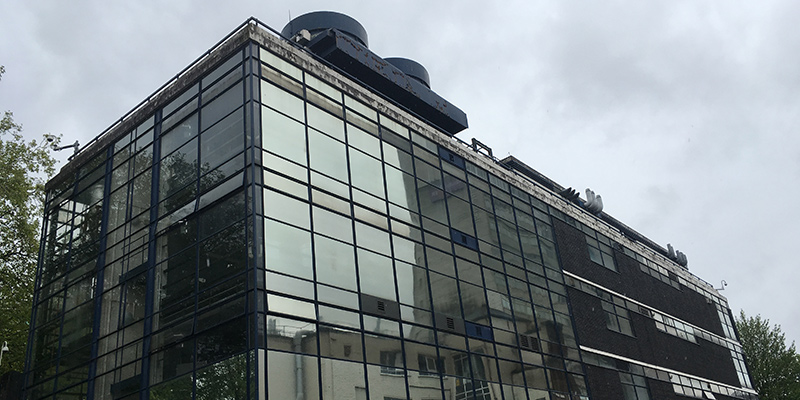
Words: Joe Shervin
Images: Wikimedia Commons, The University of Manchester, Joe Shervin
Be sure to subscribe on our homepage to keep up to date with all the latest posts from The Hub.
aerospaceAerospace and Civil EngineeringChemical EngineeringheritagehistoryMechanical


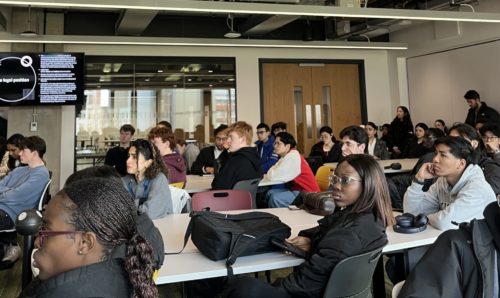
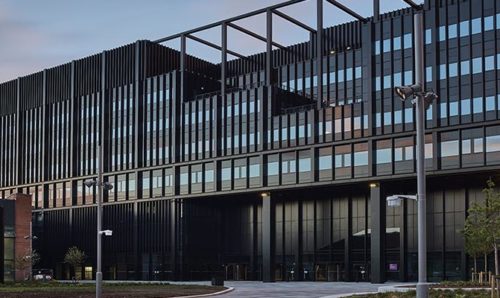
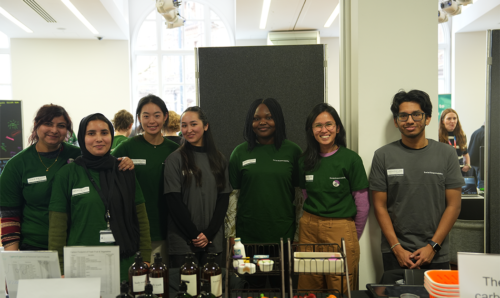
Dr Jeffrey Ibbotson says
I graduated with in 1964 with a PhD in Chemical Engineering from UMIST and Frank Morton’s Department of Chemical Engineering in the Mill at Jackson Street. My MSc (Tech) and PhD theses were ‘Liquid Solid Chromatography’ and I built and operated the worlds largest Liquid Solid Chromatography Column ( 1″ diameter x 90 feet in length ). The Column was located in the tower of Jackson’s Mill. My theses were supervised by Dr. King and Professor Frank Morton. I am interested to know if the Columns are still in that building or transferred to the Morton Laboratory. My graduate studies were sponsored by The British Medical Research and focused on separating Mineral Oils into finite fractions for Skin Cancer Research. Also, my work focused on Optimizing The Efficiency of Separation of these Mineral Oils. So pleased to hear that a Laboratory was built in honour of Professor Morton who I knew quite well. Please reply to my request at my email. Sadly 8 years after graduation in 1972 I developed Larynx Cancer from the inhalation of the benzene I used in my research. I lost my Larynx but I am a cancer survivor now age 85.